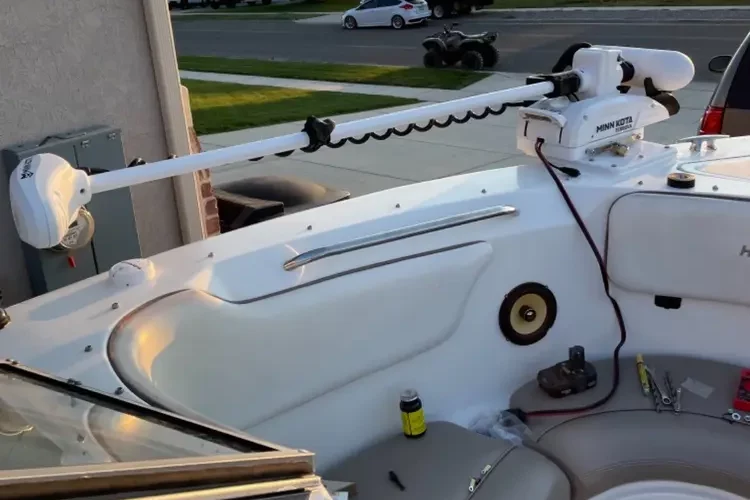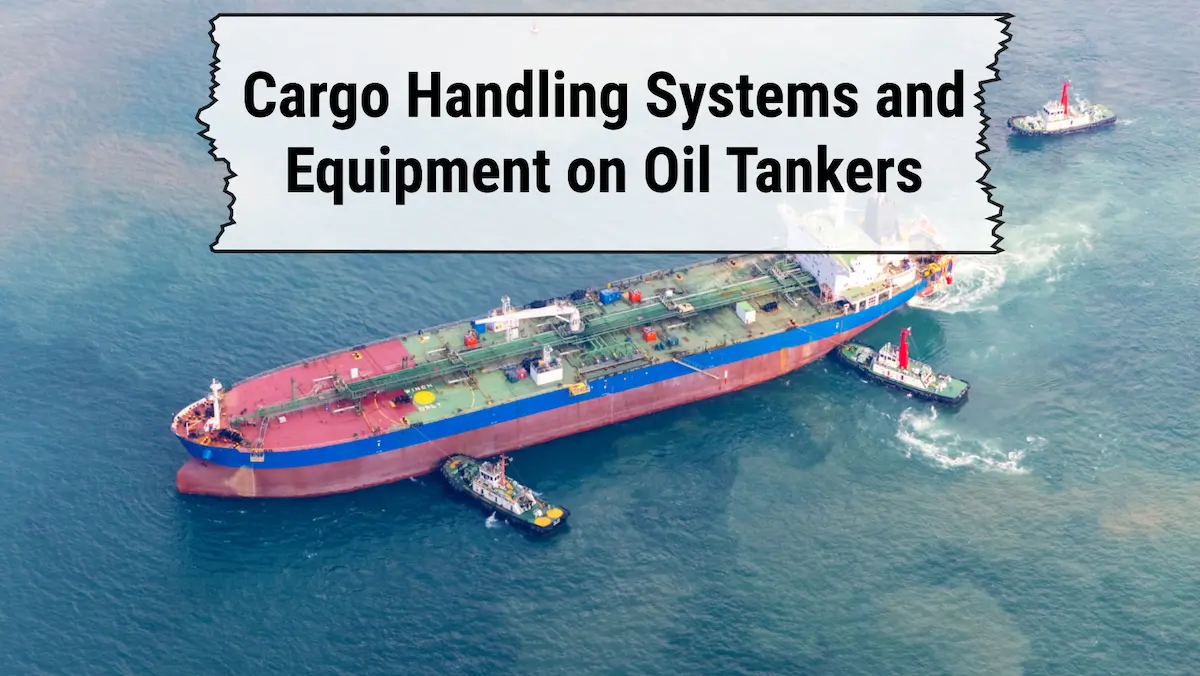As an avid user of trolling motors, I understand the importance of having a reliable and efficient battery to power your trolling motor. The best battery for trolling motors ensures optimal performance and longer runtimes, allowing you to focus on your fishing or boating experience.
This article will discuss the different types of batteries available for the best saltwater trolling motors from our guide, factors to consider when choosing a battery, top recommendations, and maintenance tips to extend battery life.

Types Of Batteries For Trolling Motors
There are three main types of batteries for trolling motors: lead-acid, lithium-ion, and solar. We will explore the pros and cons of each type below.
- Lead-acid batteries
- Flooded: These batteries require regular maintenance, but they’re cost-effective and widely available. However, they’re heavier and have a shorter lifespan compared to other options.
- AGM (Absorbent Glass Mat): AGM batteries are sealed, maintenance-free, and more resistant to vibrations. They’re lightweight compared to flooded batteries, but they’re more expensive and have a moderate lifespan.
- Gel: Gel batteries are also sealed and maintenance-free. They have a longer lifespan than flooded and AGM batteries, but they’re more sensitive to overcharging and may be more expensive.
- Lithium-ion batteries: These batteries are lightweight, have a high power output, and have a longer lifespan compared to lead-acid batteries. However, they can be more expensive upfront.
- Solar-powered batteries: Batteries charged by solar panels are eco-friendly and can provide a steady power supply. However, they may be less reliable in cloudy or low-light conditions.
Factors To Consider When Choosing A Battery
When selecting a battery for your trolling motor, consider the following factors:
- Battery capacity (Ah): A higher capacity, such as 100Ah, allows for longer runtime and better performance. Ensure the battery capacity meets the demands of your trolling motor and usage patterns. Frequent and longer trips may require a higher-capacity battery.
- Weight: Lighter batteries, like lithium and AGM, are more comfortable to transport and may improve boat performance. Heavier batteries can impact the boat’s balance and speed. Always consider the weight limit of your boat when choosing a battery.
- Cost: Consider your budget and weigh the benefits of each battery type against the upfront cost and long-term savings. While lithium-ion batteries may have a higher initial cost, their extended lifespan and performance could result in long-term savings.
- Cycle life: The number of charge and discharge cycles a battery can handle before its capacity reduces significantly affects its longevity. Batteries with a higher cycle life, like lithium-ion and gel batteries, tend to last longer.
- Voltage: Ensure the battery voltage is compatible with your trolling motor. Most trolling motors require a 12V battery, but some models may need 24V or 36V.
- Discharge rate: The discharge rate indicates how quickly a battery can provide power. A higher discharge rate is crucial for maintaining optimal performance under heavy loads or high-speed settings on your trolling motor.
- Charge time: Consider the time it takes to charge the battery fully. Faster charging times can be beneficial for those who frequently use their trolling motors or have limited time between trips.
- Environmental impact: Batteries with lower environmental impact, like lithium-ion and solar-powered options, are more eco-friendly and sustainable.
- Compatibility with charging sources: Some batteries may require specific chargers or charging conditions. Ensure the battery you choose is compatible with your preferred charging method, such as solar panels or onboard chargers.
By evaluating these factors, you can make an informed decision when selecting the best battery for trolling motor.
How Long Will A Battery Run A Trolling Motor?
The runtime of a battery powering a trolling motor depends on various factors, such as the battery capacity, trolling motor’s power consumption, and speed setting. To give you a rough idea of how long a battery can run a trolling motor, here’s a table with examples for several capacities:
| Battery Capacity (Ah) | Trolling Motor Power (Watts) | Speed Setting | Approximate Runtime (Hours) |
|---|---|---|---|
| 50Ah | 300W | Low | 6-8 |
| 50Ah | 300W | Medium | 4-6 |
| 50Ah | 300W | High | 2-4 |
| 100Ah | 300W | Low | 12-16 |
| 100Ah | 300W | Medium | 8-12 |
| 100Ah | 300W | High | 4-8 |
| 150Ah | 300W | Low | 18-24 |
| 150Ah | 300W | Medium | 12-18 |
| 150Ah | 300W | High | 6-12 |
Please note that these are approximate values and can vary based on factors like battery efficiency, trolling motor efficiency, and actual power consumption. To calculate a more accurate runtime, you can use the following formula:
Runtime (Hours) = Battery Capacity (Ah) / (Trolling Motor Power (Watts) / Voltage)
Remember that the trolling motor power in watts can vary depending on the speed setting and the specific trolling motor model. Additionally, it’s best not to discharge your battery below 50% of its capacity to prolong its lifespan.
Best Battery for Trolling Motors
Here is a list of top-rated batteries for trolling motors, each with its features and benefits:
- Battle Born LiFePO4 Deep Cycle Battery: A lightweight and durable lithium battery with a 100Ah capacity. This battery offers a fast charging time, impressive cycle life of over 3,000 cycles, and built-in safety features. Although it has a higher upfront cost, its extended lifespan and performance make it a great long-term investment.
- VMAX MR127 12V 100Ah AGM Deep Cycle Battery: A reliable AGM battery with 100Ah capacity and a maintenance-free design. This battery is resistant to vibrations and provides consistent power output, making it suitable for various trolling motor applications. Its lower initial cost compared to lithium batteries and solid performance make it a popular choice among boaters.
- Renogy 12V 200Ah Rechargeable Gel Deep Cycle Battery: A high-capacity gel battery with excellent performance and a long lifespan. This battery has a slower self-discharge rate, making it ideal for boaters who need a battery that holds its charge for extended periods. Its sealed design prevents leaks and requires no maintenance, while its higher capacity ensures longer runtime.
- ExpertPower 12V 100Ah Lithium LiFePO4 Deep Cycle Rechargeable Battery: This lithium battery offers a lightweight design, 100Ah capacity, and a lifespan of over 2,500 cycles. Its built-in battery management system (BMS) protects against overcharging, over-discharging, and short circuits. The ExpertPower battery also has a fast charging time and high discharge rate, making it suitable for demanding trolling motor applications.
- Universal Power Group 12V 100Ah Solar Wind AGM SLA DEEP Cycle VRLA Battery: This AGM battery is designed for solar and wind power applications but works exceptionally well for trolling motors. With 100Ah capacity, it provides extended runtime and consistent power output. Its sealed, maintenance-free design makes it easy to handle, and its lower upfront cost makes it an affordable option for many boaters.
By considering the features and benefits of these top-rated batteries, you can choose the one that best suits your trolling motor needs and preferences.
Battery Maintenance And Care
Proper maintenance and care are essential for extending the life of your trolling motor battery and ensuring optimal performance. Here are some tips to help you maintain your battery:
- Keep the battery clean: Regularly clean the battery terminals and casing using a soft cloth or brush to remove dirt, dust, and corrosion. Clean terminals ensure a good connection and efficient power transfer to your trolling motor.
- Charge the battery fully after each use: Recharge your battery as soon as possible after each use to prevent sulfation and maintain its capacity. Avoid overcharging, as it can damage the battery and reduce its lifespan. Always use a compatible charger and follow the manufacturer’s charging guidelines.
- Store the battery in a cool, dry place: When not in use, store your battery in a well-ventilated, cool, and dry area away from direct sunlight, heat sources, or moisture. Extreme temperatures can affect the battery’s performance and lifespan.
- Regularly inspect the battery: Check your battery for any signs of damage, wear, or swelling. Damaged batteries can be hazardous and should be replaced immediately.
- Monitor electrolyte levels (for flooded lead-acid batteries): Regularly check and maintain the electrolyte levels in flooded lead-acid batteries. Add distilled water as needed to keep the electrolyte levels within the recommended range. Avoid overfilling, as it can cause the electrolyte to overflow and damage the battery.
- Equalize flooded lead-acid batteries: Occasionally perform an equalization charge to balance the cells and prevent sulfation. Follow the manufacturer’s guidelines for the equalization process and ensure proper ventilation during the procedure.
- Avoid deep discharging: Deep discharging can significantly reduce the lifespan of your battery. Try to avoid discharging the battery below 50% of its capacity. If possible, invest in a battery monitor to track the state of charge and prevent deep discharging.
- Secure the battery: Ensure the battery is securely fastened in the boat to prevent movement and potential damage during operation. A battery box or tray can help secure the battery and protect it from impact or vibrations.
By following these maintenance and care tips, you can extend the life of your trolling motor battery and enjoy a consistent performance on the water.
Conclusion
In summary, the best battery for trolling motors depends on your needs and preferences. Consider factors like capacity, weight, and cost when making your decision. Based on the information provided, lithium-ion batteries, such as the Battle Born.
- LNG vs. LPG: A Comprehensive Guide to the Difference between LNG and LPG – November 5, 2024
- Cargo Handling Systems and Equipment on Oil Tankers – November 5, 2024
- What is Ship Tonnage? All Types and Use Explained! – October 30, 2024



